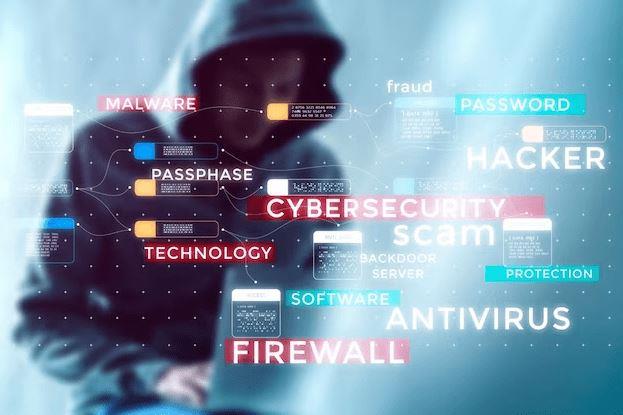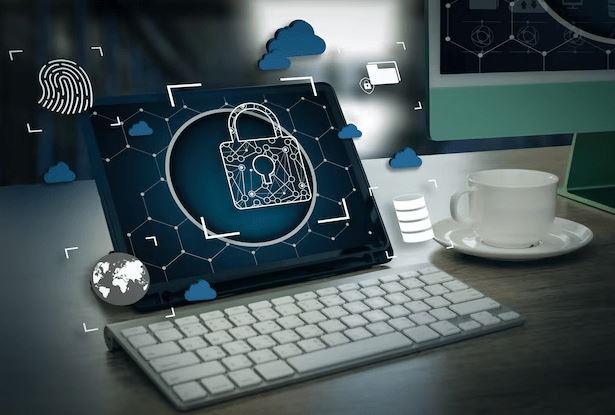Table of Contents

Cybersecurity is safeguarding systems, networks, and data from digital attacks. It involves various technologies, processes, and practices designed to protect against threats, ensuring information confidentiality, integrity, and availability. From securing personal devices to fortifying complex network infrastructures, cybersecurity aims to mitigate risks posed by malicious actors seeking unauthorized access, data breaches, or disruption of operations. Its importance spans individuals, businesses, and governments, emphasizing the need for robust measures, continual vigilance, and proactive strategies to counter evolving cyber threats in our increasingly interconnected digital world.
The Foundation of Cybersecurity
The foundation of cybersecurity lies in its multifaceted approach to protecting digital systems, networks, and data from malicious threats. It encompasses a blend of technologies, practices, and strategies to prevent unauthorized access, data breaches, and cyber-attacks. At its core, cybersecurity prioritizes confidentiality, integrity, and availability of information. Robust measures such as encryption, firewalls, and intrusion detection systems form the backbone of this defence, constantly evolving to counter emerging threats. Understanding this foundational layer is crucial in comprehending the intricate ecosystem of cybersecurity and its pivotal role in safeguarding our increasingly interconnected digital world.
The Evolution of Cyber Threats
The evolution of cyber threats has been relentless, adapting alongside technological advancements. Cyber threats have grown in complexity from early viruses and worms to sophisticated ransomware and AI-driven attacks. Social engineering tactics exploit human vulnerabilities, while IoT expansion creates new entry points. State-sponsored attacks and organized cybercrime have escalated, targeting critical infrastructure and sensitive data. As technology progresses, so do the methods of cyber attackers, necessitating continuous innovation in cybersecurity measures to mitigate these ever-evolving threats. Understanding this evolution is crucial in fortifying defences against modern cyber threats’ diverse and persistent nature.
Understanding Cyber Threats
Cyber threats come in various forms, from common phishing scams and malware to sophisticated hacking techniques. Hackers and cybercriminals continuously devise new methods to exploit vulnerabilities in systems and networks. The rise of interconnected devices through the Internet of Things (IoT) has expanded the attack surface.
Impact of Cyber Attacks
The repercussions of cyber attacks can be severe, ranging from financial losses and data breaches to reputational damage and operational disruptions. Businesses of all sizes face immense challenges in mitigating these risks, requiring robust cybersecurity measures.
Key Components of Cybersecurity

Critical components of cybersecurity encompass various crucial aspects ensuring comprehensive protection—network security shields systems through firewalls and intrusion detection. Data security involves encryption and access control, safeguarding sensitive information. Endpoint security secures devices with antivirus software and encryption. Cloud security safeguards data stored in cloud platforms via encryption and authentication. Application security involves secure coding practices and frequent updates to thwart vulnerabilities. Each component is pivotal in fortifying the digital landscape against evolving cyber threats.
1. Network Security
Securing networks involves implementing firewalls, intrusion detection systems, and virtual private networks (VPNs) to protect against unauthorized access and malicious activities.
2. Data Security
Protecting sensitive information involves encryption, access controls, and regular data backups to prevent breaches and ensure confidentiality, integrity, and availability.
3. Endpoint Security
Securing endpoints such as devices (laptops, smartphones, etc.) is crucial. Antivirus software, patch management, and device encryption help mitigate risks associated with endpoint vulnerabilities.
4. Cloud Security
As more data migrates to the cloud, ensuring the security of cloud-based services and infrastructure is essential. Strong authentication, encryption, and monitoring are integral parts of cloud security.
5. Application Security
Securing software and applications involves implementing secure coding practices, regular updates, and vulnerability assessments to prevent exploitation.
Earthlink Internet and Cybersecurity
Earthlink stands as a stalwart in prioritizing cybersecurity. With a firm commitment to user safety, Earthlink employs robust security measures, ensuring a secure online environment for its users. Their proactive approach involves implementing cutting-edge technologies and collaborating with cybersecurity experts to stay ahead of evolving threats. Earthlink’s dedication reflects its services and continuous efforts to fortify its network against potential vulnerabilities. Users can trust Earthlink to provide high-speed connectivity and a vigilant shield against cyber threats, fostering a safer online experience for all.
Earthlink’s Commitment to Cybersecurity
Earthlink Internet, as a prominent provider of internet services, recognizes the critical role of cybersecurity in ensuring a safe online experience for its users. Earthlink prioritizes safeguarding its users’ data and privacy through robust network security protocols and continuous monitoring.
Collaborative Efforts in Cybersecurity
Earthlink partners with cybersecurity experts and implements cutting-edge technologies and best practices to mitigate evolving cyber threats. This proactive approach demonstrates their dedication to providing a secure internet environment.
Best Practices for Cybersecurity
Implementing robust cybersecurity measures involves regular education and training programs to enhance awareness. Employ robust authentication methods and strict access controls while ensuring timely updates and patch management across all systems and devices. Develop comprehensive incident response and recovery plans to address and mitigate cyber threats swiftly. Additionally, regular security audits and assessments help identify vulnerabilities for proactive resolution. Collaboration with reputable cybersecurity experts and service providers fortifies defences, ensuring a resilient security posture against evolving threats.
Education and Training
Regular cybersecurity awareness programs and training sessions empower individuals to recognize potential threats and adopt secure online practices.
Strong Authentication and Access Controls
Implementing multi-factor authentication and strict access controls adds layers of security, reducing the risk of unauthorized access.
Regular Updates and Patch Management
Keeping software, systems, and devices updated with the latest security patches is crucial in addressing known vulnerabilities.
Incident Response and Recovery Plans
Developing comprehensive incident response plans enables swift actions in a cyber attack, minimizing potential damage.
Conclusion
Cybersecurity is an ongoing challenge in an ever-evolving digital landscape. Understanding its significance and adopting proactive measures are imperative to safeguard personal and organizational data. A more secure online world can be achieved with continued efforts from individuals, businesses, and service providers like Earthlink Internet.
FAQs
What is cybersecurity?
Cybersecurity refers to protecting systems, networks, and data from digital attacks.
Why is cybersecurity critical?
It’s crucial because it safeguards sensitive information, prevents unauthorized access, and maintains the integrity of systems and networks.
What are common cyber threats?
Common threats include malware, phishing, ransomware, DDoS attacks, and social engineering.
How does cybersecurity affect businesses?
Cybersecurity is vital for businesses to protect customer data, prevent financial losses, maintain trust, and ensure operational continuity.
What are essential cybersecurity practices?
Practices include:
- Regular software updates.
- Strong password management.
- Use of antivirus software.
- Employee training on security protocols.
What is the role of encryption in cybersecurity?
Encryption encodes information, making it unreadable to unauthorized users, thus safeguarding data during transmission and storage.
What is the Internet of Things (IoT) and its cybersecurity implications?
IoT refers to interconnected devices. Ensuring their security is vital as they increase the attack surface for potential cyber threats.
How can individuals enhance their cybersecurity?
Individuals can improve security by using strong, unique passwords, being cautious with email attachments, and enabling two-factor authentication.
What is the impact of data breaches on cybersecurity?
Data breaches can lead to financial losses, reputational damage, and compromise sensitive information, necessitating robust cybersecurity measures.
How does cybersecurity continue to evolve?
Cyber threats evolve with technology. Advancements like AI-powered security tools and increased cloud adoption reshape cybersecurity strategies to adapt to new threats.u v
Andrew Symonds is a tech enthusiast with a passion for exploring the ever-evolving landscape of technology. With a background in computer science and 3 years of hands-on experience in software development, cybersecurity, and emerging tech trends, Andrew delves into the intricacies of the digital realm. His articles blend in-depth knowledge with a knack for simplifying complex tech concepts, making them accessible to both tech-savvy individuals and those new to the technological frontier. Whether it’s AI, cybersecurity, or the latest innovations, Andrew strives to unravel the potential and impact of technology in our rapidly advancing world.

